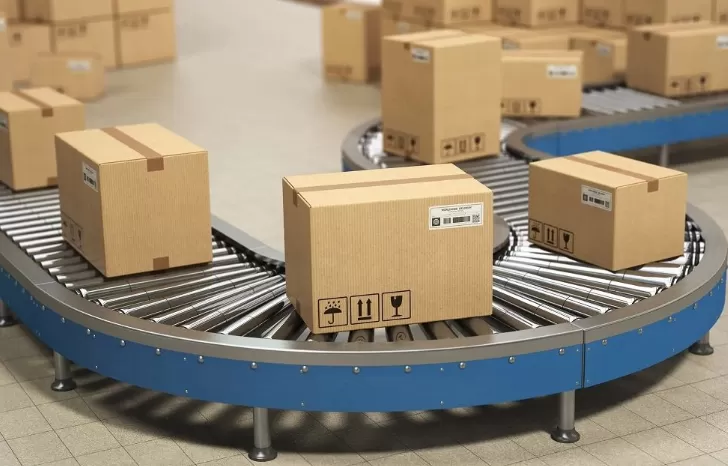If you ship inventory to Amazon FBA, customs clearance isn’t an academic topic — it’s a cashflow and inventory-availability issue. This guide gives you the operational playbook: exactly which documents to prepare, how brokers and forwarders work together, a step-by-step SOP for avoiding holds, precise landed-cost math with worked examples, copy-paste RFQs and contract language, plus the vetting matrix you can use to pick a broker today.
Quick answer (what to do now)
Use a customs broker experienced with Amazon FBA that is either CARM/CBP-ready (or equivalent in your destination), provides line-item landed-cost quotes, and acts or nominates a reliable Importer of Record (IOR). Demand stuffing photos, stuffing/Seal numbers, and proof they handle FBA appointments — otherwise don’t book the shipment.
Table of contents
Broker vs Forwarder vs Courier — one-line decision map
Before you ship — mandatory docs, labeling and pre-QA
Clearance timeline: sea vs air vs express (what lengthens release)
Landed-cost breakdown — full component list + two worked examples
Importer of Record (IOR): who, why, and sample contract clauses
Route & country anchors (US / Canada / UK practical notes)
How to vet & score customs clearance agents — RFQ + scoring table
Operational SOP (Before → On arrival → Post-release) with email templates
Value-adds and common upsell fees (how to negotiate)
Claims, disputes & incident handling (templates and evidence checklist)
FAQ (practical, short)
1 — Broker vs Forwarder vs Courier: a crisp decision map
Customs broker — specialist in clearance, duty/tax calculation, filings, and holding/inspection handling. Use them when compliance, correct classification (HS), and guaranteed legal filings are the priority. Brokers typically charge a brokerage fee + disbursements.
Freight forwarder with brokerage — one vendor handles freight + brokerage + drayage + appointment. Best for one-stop convenience. Confirm they will provide separate line items for brokerage and freight, not a lump sum.
Courier (DHL/UPS/FedEx) — fastest for small parcels and included clearance for Express, but expensive and not always ideal for pallet/container volumes or complex IOR scenarios.
Rule: if you’re a non-resident or your shipments require careful HS code work, always ensure a broker is part of the process (either stand-alone or integrated with your forwarder).
2 — Before you ship: documents, labeling, and pre-QA
These are the exact items you must prepare and verify before the container/airwaybill is released:
Commercial invoice — required fields
Seller & buyer legal names and addresses
Invoice number and date
Complete HS code per line item (6–10 digits as required by country)
Unit value and total value per line
Currency and INCOTERM (e.g., FOB Shanghai)
Country of origin (manufacturer country)
Net / gross weight and carton dimensions (per carton if possible)
IOR details or broker name and BN / tax ID if already appointed
Packing list
Pieces per carton, carton IDs, unit quantity per carton, gross weight per carton, dims per carton (L×W×H in cm)
Total CBM (m³) and total gross weight
Transport docs
AWB for air or Bill of Lading (BL) for sea — include timely copies to broker
Certificate of origin / preferential docs (if using free trade agreements)
Insurance certificate (if purchased)
Amazon FBA specifics
FBA shipment ID and Seller Central shipment plan details included in package docs when possible
Carton / carton-level FBA box ID labels (exact placement) — do not assume labels are optional
Pallet labeling and pallet dimensions if shipping pallets to FBA
Pre-shipment QA
Request stuffing photos that show carton labels and seal numbers. Save images with filenames that include container/BL and seal number.
Confirm palletization standard matches Amazon’s pallet rules (block, stretch wrap, label placement).
Provide the forwarder and broker with a single spreadsheet linking carton IDs → FBA box IDs → SKU to avoid mixups.
3 — Clearance timeline: realistic bands and what adds days
Typical time bands (planning bands — not guarantees):
Express (DHL/UPS/FedEx): 1–3 business days from pickup to delivery (customs processing included).
Air freight (consolidated): 5–10 business days door-to-door from origin to FBA (depends on consolidation, flight routing, and customs).
Ocean (FCL): 20–45+ days depending on route and port; add 2–10 days at destination for port processing if docs are incomplete.
Ocean (LCL): add 3–10 days extra for consolidation, deconsolidation, and terminal processing.
Common causes for delay
Missing or incorrect HS codes or invoice values
No appointed or incorrect IOR details (billing holds)
Mismatch between FBA label data and commercial invoice
Random customs inspection (X-ray, physical exam, fumigation)
Unpaid duties/taxes or insufficient payment method for charges
CARM/ACE/other portal registration lapses (broker or importer not CARM/ACE-ready)
Mitigation: file manifests early; appoint IOR and broker with portal access; upload docs to broker portal 48+ hours before arrival where possible.
4 — Landed-cost breakdown: every line item you must request (and two worked examples)
Full component list (ask for line items exactly as shown)
Product cost (per unit and total)
International freight (air: per kg; ocean: per 20’/40’ container or per CBM for LCL)
Origin charges: local truck, terminal handling at origin, export documentation fee
Export customs clearance (if applicable)
Insurance (cargo policy or freight insurance)
Import duties (by HS code)
Import VAT / GST / HST / VAT (tax on dutiable value + freight + insurance as per local rules)
Customs brokerage fee (separate line)
Terminal Handling Charges (THC) at destination
Storage / demurrage / detention (if delayed)
Examination fees (X-ray or physical exam)
Security / manifest filing fees (e.g., ISF, AMS, CARM fees)
Drayage to final warehouse / pick up fee
FBA appointment fee (+ inbound receiving fee if forwarder charges)
Prep center fees: labeling, repalletization, rework
Local taxes or environmental fees (if any)
Miscellaneous (fumigation, fumigation certificate, pallet disposal)
Key operational note: a broker or forwarder quoting a single lump sum is not acceptable for commercial decisions; insist on a line-by-line landed-cost.
Worked example A — small SKU, air consolidated (accurate arithmetic)
Product value: $5.00 × 1,000 units = $5,000.00
International air freight (consolidated): $1,200.00
Origin handling & documentation: $250.00
Duties (assume 2% on product value): 0.02 × 5,000.00 = $100.00
Tax base for GST (product+freight+duty) = 5,000.00 + 1,200.00 + 100.00 = 6,300.00
GST (5%): 0.05 × 6,300.00 = $315.00
Destination handling + drayage + appointment: $600.00
Insurance: $80.00
Total landed cost = 5,000 + 1,200 + 250 + 100 + 315 + 600 + 80
Calculate stepwise:
5,000 + 1,200 = 6,200
6,200 + 250 = 6,450
6,450 + 100 = 6,550
6,550 + 315 = 6,865
6,865 + 600 = 7,465
7,465 + 80 = 7,545.00
Unit landed cost = 7,545.00 ÷ 1,000 = $7.545 → $7.55 (rounded)
Worked example B — pallet / LCL bulk (accurate arithmetic)
Product total value: $50,000.00
Ocean LCL share estimate: $900.00
Origin packing & docs: $500.00
Duties (assume 5%): 0.05 × 50,000.00 = $2,500.00
Destination service & drayage: $1,200.00
Insurance: $300.00
Total landed cost calculation:
50,000 + 900 = 50,900
50,900 + 500 = 51,400
51,400 + 2,500 = 53,900
53,900 + 1,200 = 55,100
55,100 + 300 = 55,400.00
Actionable requirement: always ask brokers to show which tax base they use to calculate VAT/GST (some countries calculate VAT on value+freight+insurance; others differ).
5 — Importer of Record (IOR): responsibilities, options, and contract language
What IOR does (brief): legal importer listed on customs entry; responsible for duties, taxes, accuracy of declarations, and any penalties related to customs misclassification or missing paperwork.
Options for sellers
Seller/brand acts as IOR — requires local registration (e.g., Business Number) and possibly CARM/ACE access. Best for control but demanding administratively.
Use a third-party IOR service — a fiscal representative acts as IOR for a fee. Good for non-resident sellers.
Forwarder/broker acts as IOR — convenient; verify their indemnity and notification clauses.
Local subsidiary/affiliate acts as IOR — if you have one, this is ideal for repeated imports.
Pros & cons matrix (short)
Seller as IOR: +control; −administrative burden & tax registration
Third-party IOR: +simple for non-residents; −ongoing fees & potential liability exposure
Broker as IOR: +convenience; −confirm limits of liability & payment terms
Sample contract clauses (copy-paste ready — adapt to law and get counsel)
IOR Appointment and Indemnity
The Client appoints [BROKER NAME] as Importer of Record (IOR) for the goods described herein. Broker will act in good faith to complete import declarations and pay duties/taxes on the Client’s behalf where pre-approved. Client shall reimburse Broker for all duties, taxes, fees, and disbursements within 5 business days of invoice. Client indemnifies Broker against penalties, fines, or charges arising from false or inaccurate commercial information provided by Client.
Limit of Liability for Classification Errors
Broker will use commercially reasonable efforts to classify goods using available information. Broker is not liable for duties or penalties arising from incomplete, misleading, or incorrect data provided by Client. For duty disputes arising post-clearance, Client agrees to cooperate in resolution; any refunds recovered will be credited less Broker’s administrative fee.
Advance Notification & Approval for Duties over [AMOUNT]
Broker will notify Client in writing if duties and taxes are estimated to exceed [USD X,XXX] prior to payment; Client must approve payment instructions or provide a written payment guarantee.
(These clauses are operational; consult local counsel for enforceability and jurisdictional compliance.)
6 — Route & country anchors (quick practical notes)
Create separate deep pages later; here are operational notes:
United States (CBP / ACE / ISF)
ISF filing rules for ocean imports apply—file 24–72 hours before vessel load depending on party responsible. Bonded entries or continuous bonds may be required. Use certified broker with ACE access.
Canada (CBSA / CARM)
CARM portal requires registration or delegation. Non-compliance causes release delays. Appointment of IOR or broker with CARM access is common.
United Kingdom (Customs/UK CDS)
Post-Brexit: customs declarations and EORI must be correct; VAT on imports applies and must be factored into landed cost.
(Add local pages for each major target market; include sample fees and local filing timeframes.)
7 — How to vet & score customs clearance agents (RFQ + scoring system)
RFQ fields to require (copy/paste ready)
Company name, license numbers, contact, trade references
Route (origin city/port → destination FBA node/address)
INCOTERM (FOB/CIF etc.)
HS codes, total value, total gross weight, total CBM, piece counts
Required services: customs brokerage, IOR, manifest filing, exam handling, drayage, FBA appointment, rework/prep
Insurance minimums required
SLA for release and claims steps
Scoring table (use 0–10, weight each criterion)
FBA experience & SPN references (weight 25%)
Price transparency & line-item quoting (20%)
Customs & portal readiness (e.g., CARM/ACE) (20%)
Lead time reliability & tracking (15%)
Value-added services & local network (10%)
Insurance & references (10%)
Red flags to watch
Refusal to provide line-item costs
No evidence of customs license or portal access
Excessively low quote with vague scope
No stuffing photos or unwillingness to take responsibility for palletization errors
8 — Operational SOP (Before → On arrival → Post-release) with templates
Roles: Seller (S), Forwarder (F), Broker (B)
Before shipment (S & F & B)
S: Provide commercial invoice, packing list, FBA shipment ID, HS codes, product photos.
F: Confirm pickup, upload AWB/BL to broker portal 48+ hours pre-arrival.
B: Pre-validate HS codes and provide preliminary duty/tax estimate within 24 hours of docs.
On arrival (B & F)
B: File entry and notify S/F of estimated duties/taxes within X hours.
F: Provide stuffing photos, seal number, container status, and arrange drayage.
If inspection requested: B requests exam appointment and notifies S immediately.
Post-release (F & B & S)
F: Arrange drayage to FBA and appointment scheduling; confirm pallet labels and trailer slot.
B: Send final customs invoice with disbursement details; reconcile any differences.
S: Approve charges or dispute line items within agreed SLA (e.g., 7 business days).
Sample email — Request IOR confirmation
Subject: IOR confirmation for shipment [BL/AWB #] — [Client name]
Hi [Broker name],
Please confirm you will act as Importer of Record for BL/AWB [#], route [origin → destination FBA node], and confirm payment terms for duties/taxes and your IOR fees. Provide your local tax ID (BN/EORI) and a copy of your customs license. We require written confirmation within 24 hours.
Regards, [Client]
Escalation email — customs hold
Subject: URGENT — Customs hold on BL [#] — Please escalate
Hi [Broker],
We’ve been notified of a hold for BL [#]. Provide the hold reason, required documents, and estimated release timeframe within 2 hours. If additional fees are required, provide a written estimate. If inspection is scheduled, please supply the inspection report and photos.
Regards, [Client]
9 — Value-adds & common upsell fees (negotiate these)
Providers commonly bill separately for:
Labelling & labeling error correction (per carton/pallet)
Pallet repacking (per pallet)
Rework after customs inspection (hourly + materials)
Fumigation or treatment (if required)
Rush appointment or after-hours receiving (premium)
Storage beyond free time at terminal (per day)
Administrative fees for underpayment recovery or penalty handling
Negotiation tip: for recurring shipments, negotiate fixed unit fees for labeling/rework and a cap on ad hoc charges for a defined pilot period.
10 — Claims, disputes & incident handling (practical)
Evidence you need immediately
Photos (pre-stuffing, seal, stash, inspection)
BL/AWB, commercial invoice, packing list
Inspection/slip notes from customs or terminal
Delivery proof and Amazon rejection notes (if any)
Claims escalation template (copy/paste)
Subject: Claim — Customs inspection damage on BL/AWB [#]
Hi [Broker/Carrier],
We are submitting a claim for damage discovered during customs inspection. Attached: photos, BL/AWB, commercial invoice, packing list, and inspection report. Please confirm receipt and provide your claims process, timeline, and contact for escalation. We reserve the right to pursue recovery through insurer or carrier if not resolved in 30 days.
[Client contact details]
Insurance note:cargo insurance usually covers physical loss/damage but not delays. If your primary risk is delay (stock-out), consider contingent logistics plans, split shipments, or premium express for critical SKUs.
11 — FAQ
Who acts as IOR for my FBA shipment?
The IOR can be you (if registered), a local fiscal representative, or your broker/forwarder — confirm in writing before shipping.
What documents does customs require?
Commercial invoice with HS codes, packing list, AWB/BL, COO, and any preferential docs. FBA label details help avoid refusals.
How long is customs clearance?
Express: 1–3 days; air (consol): 5–10 days; ocean: 20–45+ days. Missing docs or inspections add days.
What are customs brokerage fees?
Varies by country and complexity; expect a base brokerage fee + disbursements. Always ask for a range and examples.
Can a forwarder be my customs broker?
Yes — many provide both services. Verify they’ll give line-item costs and accept IOR responsibilities if required.
What if Amazon rejects the dock delivery?
Arrange repalletization/label correction at local prep center or return to origin; determine responsibility and costs in advance.
How to avoid holds for inspections?
Provide complete, accurate documents early; use correct HS codes; appoint CARM/CBP-ready broker; include supplier compliance checks.
Do I need insurance?
Yes — insure shipments for physical loss/damage. Consider additional coverage for delay only if critical.
What are red flags in quotes?
Lump-sum quotes, refusal to disclose IOR approach, no customs license proof, or no stuffing photos policy.
How to calculate landed cost?
Sum product cost + all line items listed earlier; get a line-item landed cost from your broker/forwarder.

 EN
EN
 FR
FR
 ES
ES
 JA
JA
 PT
PT
 RU
RU
 AR
AR








